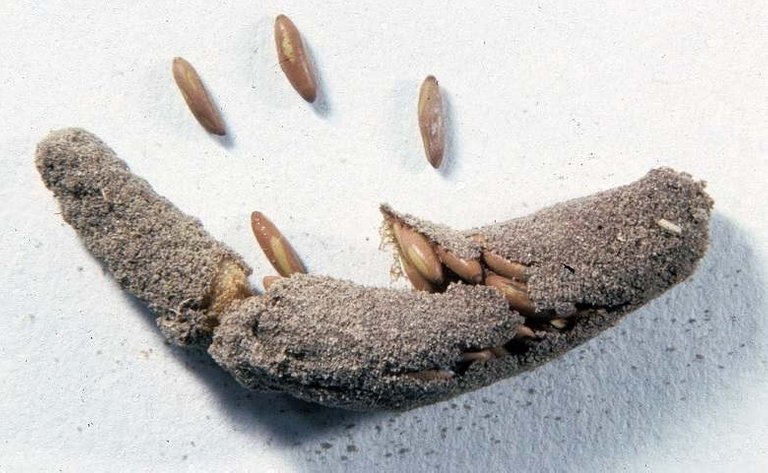
One of the insects that is easy to find anywhere is the grasshopper. Especially if you live near parks, rice fields, or have your own plants, this Orthoptera animal will definitely be around you.
This jumping insect is one of the animals with the greatest jumps in the world. A grasshopper, can jump as far as 20 times the size of its equivalent body to jump over a basketball court for humans.
In addition to its expertise in jumping, grasshoppers can also fly very far. Some species of Orthoptera can even migrate hundreds of kilometers by flying from one place to another.
To get to know grasshoppers even further, here is the metamorphosis of grasshoppers or the life cycle of grasshoppers that you can learn about.

As egg laying, the female grasshopper will lay fertilized eggs in the form of egg pods, either in the sand or among the leaf litter. Each pod contains 10-300 eggs with a shape resembling rice grains.
Grasshopper eggs take about 10 months to finally hatch and become nymphs. These eggs can also lay dormant during autumn and winter.

After hatching, the nymphs or young grasshoppers will start eating the soft, fresh plant leaves.
In this stage, the grasshopper has a light color, has no wings, and also doesn't have reproductive organs.
In general, nymphs will experience 5-6 molting processes and change the shape and structure of their bodies until they become adults.
In this stage of the grasshopper life cycle, it takes 5-10 days, depending on the species and weather conditions, until it finally increases in size and develops wing pads.

After 25-30 days, the nymph's wings will fully develop and the grasshopper's life cycle is in the last process.
In addition to having perfect wings, adult grasshoppers also acquire sexual maturity within 15 days and survive for about 30 days.
In conclusion, the time needed for the life cycle of a grasshopper from egg to adult is about 11 months. The age of the locust itself is estimated to last up to about 12 months.
Source of potential text plagiarism
Direct translation without giving credit to the original author is Plagiarism. Repeated plagiarism is considered fraud. Fraud is discouraged by the community and may result in the account being Blacklisted.
Guide: Why and How People Abuse and Plagiarise
Please note that direct translations including attribution or source with no original content are considered spam.
If you believe this comment is in error, please contact us in #appeals in Discord.